Pediatric vs. adult NAFLD to MAFLD transition: a welcome but tangled path
The term non-alcoholic fatty liver disease (NAFLD) appears unfitting both in adults and in children. As obesity and metabolic syndrome play a relevant pathogenic role, an international group of adults’ liver disease experts has
[...] Read more.
The term non-alcoholic fatty liver disease (NAFLD) appears unfitting both in adults and in children. As obesity and metabolic syndrome play a relevant pathogenic role, an international group of adults’ liver disease experts has proposed to rename this condition metabolic (dysfunction)-associated fatty liver disease (MAFLD). While this new more appropriate and useful definition has mostly been met with good reactions in adults, it may present a tangled path in pediatrics. Here we further stress the recommendations of the North American and the European Societies for Pediatric Gastroenterology, Hepatology and Nutrition that a hyperechogenic liver in a child affected by obesity or overweight with chronically elevated liver enzymes should not be assumed to have NAFLD only. Especially in those patients who are not in the classic age range or who have particularly severe laboratory anomalies, other genetic, metabolic (inborn errors of metabolism, IEM), endocrine, intestinal and hepatic pediatric-onset conditions, should in fact be excluded, particularly when response to a weight loss trial is not available. The term pediatric fatty liver disease (PeFLD) with three subtypes [1. contextual diagnosis of an IEM; 2. metabolic (dysfunction)-associated fatty liver; 3. unknown cause of fatty liver] has recently been proposed aiming to separate true MAFLD from IEM and/or the other above mentioned conditions, which may be rare when considered individually but represent a large group when considered collectively. Although the cost-effectiveness ratio of this attitude is still indeterminate, it is likely that the advantage of the early identification of a specifically treatable pediatric-onset liver disease associated to/mimicking MAFLD would be rewarding.
Angelo Colucci ... Claudia Mandato
The term non-alcoholic fatty liver disease (NAFLD) appears unfitting both in adults and in children. As obesity and metabolic syndrome play a relevant pathogenic role, an international group of adults’ liver disease experts has proposed to rename this condition metabolic (dysfunction)-associated fatty liver disease (MAFLD). While this new more appropriate and useful definition has mostly been met with good reactions in adults, it may present a tangled path in pediatrics. Here we further stress the recommendations of the North American and the European Societies for Pediatric Gastroenterology, Hepatology and Nutrition that a hyperechogenic liver in a child affected by obesity or overweight with chronically elevated liver enzymes should not be assumed to have NAFLD only. Especially in those patients who are not in the classic age range or who have particularly severe laboratory anomalies, other genetic, metabolic (inborn errors of metabolism, IEM), endocrine, intestinal and hepatic pediatric-onset conditions, should in fact be excluded, particularly when response to a weight loss trial is not available. The term pediatric fatty liver disease (PeFLD) with three subtypes [1. contextual diagnosis of an IEM; 2. metabolic (dysfunction)-associated fatty liver; 3. unknown cause of fatty liver] has recently been proposed aiming to separate true MAFLD from IEM and/or the other above mentioned conditions, which may be rare when considered individually but represent a large group when considered collectively. Although the cost-effectiveness ratio of this attitude is still indeterminate, it is likely that the advantage of the early identification of a specifically treatable pediatric-onset liver disease associated to/mimicking MAFLD would be rewarding.
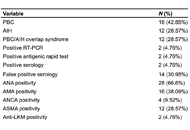 High prevalence of false positive SARS-CoV2 serology in a cohort of patients with liver autoimmune diseasesOpen AccessOriginal ArticleAim: Monitoring the prevalence of severe acute respiratory syndrome coronavirus 2 (SARS-CoV2) immunization in patients with autoimmune diseases is of particular concern to understand their response to the infection and to the v [...] Read more.Maria Giulia Cornacchia ... Gaetano ServiddioPublished: August 31, 2021 Explor Med. 2021;2:372–377
High prevalence of false positive SARS-CoV2 serology in a cohort of patients with liver autoimmune diseasesOpen AccessOriginal ArticleAim: Monitoring the prevalence of severe acute respiratory syndrome coronavirus 2 (SARS-CoV2) immunization in patients with autoimmune diseases is of particular concern to understand their response to the infection and to the v [...] Read more.Maria Giulia Cornacchia ... Gaetano ServiddioPublished: August 31, 2021 Explor Med. 2021;2:372–377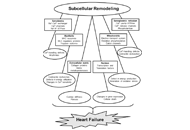 Role of angiotensin II in the development of subcellular remodeling in heart failureOpen AccessReviewThe development of heart failure under various pathological conditions such as myocardial infarction (MI), hypertension and diabetes are accompanied by adverse cardiac remodeling and cardiac dysfunction. Since heart function is ma [...] Read more.Sukhwinder K. Bhullar ... Naranjan S. DhallaPublished: August 31, 2021 Explor Med. 2021;2:352–371
Role of angiotensin II in the development of subcellular remodeling in heart failureOpen AccessReviewThe development of heart failure under various pathological conditions such as myocardial infarction (MI), hypertension and diabetes are accompanied by adverse cardiac remodeling and cardiac dysfunction. Since heart function is ma [...] Read more.Sukhwinder K. Bhullar ... Naranjan S. DhallaPublished: August 31, 2021 Explor Med. 2021;2:352–371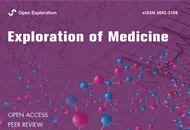 Why the aortic dissection detection risk score is problematic in emergency departmentsOpen AccessPerspectiveAcute aortic syndromes, including aortic dissection (AD), are rare. The AD detection risk score (ADDRS) and associated investigation pathway were developed to reduce missed diagnosis of AD. The methodology for its development was [...] Read more.Anne-Maree KellyPublished: August 31, 2021 Explor Med. 2021;2:348–351
Why the aortic dissection detection risk score is problematic in emergency departmentsOpen AccessPerspectiveAcute aortic syndromes, including aortic dissection (AD), are rare. The AD detection risk score (ADDRS) and associated investigation pathway were developed to reduce missed diagnosis of AD. The methodology for its development was [...] Read more.Anne-Maree KellyPublished: August 31, 2021 Explor Med. 2021;2:348–351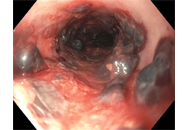 Submucosal esophageal hematomas in a critically ill patient on anticoagulationOpen AccessCase ReportSubmucosal esophageal hematoma is an uncommon clinical complication of anticoagulation. Current literature is scarce regarding presentation and management in acute submucosal hematomas in critically ill patients. Patients often pr [...] Read more.Hassam Ali, Maliha NaseerPublished: August 31, 2021 Explor Med. 2021;2:343–347
Submucosal esophageal hematomas in a critically ill patient on anticoagulationOpen AccessCase ReportSubmucosal esophageal hematoma is an uncommon clinical complication of anticoagulation. Current literature is scarce regarding presentation and management in acute submucosal hematomas in critically ill patients. Patients often pr [...] Read more.Hassam Ali, Maliha NaseerPublished: August 31, 2021 Explor Med. 2021;2:343–347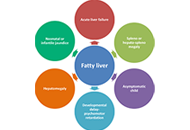 Pediatric vs. adult NAFLD to MAFLD transition: a welcome but tangled pathOpen AccessReviewThe term non-alcoholic fatty liver disease (NAFLD) appears unfitting both in adults and in children. As obesity and metabolic syndrome play a relevant pathogenic role, an international group of adults’ liver disease experts has [...] Read more.Angelo Colucci ... Claudia MandatoPublished: August 31, 2021 Explor Med. 2021;2:333–342
Pediatric vs. adult NAFLD to MAFLD transition: a welcome but tangled pathOpen AccessReviewThe term non-alcoholic fatty liver disease (NAFLD) appears unfitting both in adults and in children. As obesity and metabolic syndrome play a relevant pathogenic role, an international group of adults’ liver disease experts has [...] Read more.Angelo Colucci ... Claudia MandatoPublished: August 31, 2021 Explor Med. 2021;2:333–342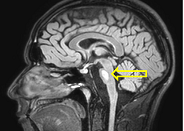 Central pontine myelinolysis secondary to glycemic variability in type 1 diabetes: a case report and a systematic review of the literatureOpen AccessCase ReportCentral pontine myelinolysis (CPM) is a rare manifestation of osmotic demyelination syndrome (ODS) which involves the pons and causes significant morbidity and mortality. CPM usually occurs in the setting of rapid correction of se [...] Read more.Stefania Di Agostino ... Mauro MaurantonioPublished: August 31, 2021 Explor Med. 2021;2:324–332
Central pontine myelinolysis secondary to glycemic variability in type 1 diabetes: a case report and a systematic review of the literatureOpen AccessCase ReportCentral pontine myelinolysis (CPM) is a rare manifestation of osmotic demyelination syndrome (ODS) which involves the pons and causes significant morbidity and mortality. CPM usually occurs in the setting of rapid correction of se [...] Read more.Stefania Di Agostino ... Mauro MaurantonioPublished: August 31, 2021 Explor Med. 2021;2:324–332 Sex hormones abnormalities in non-alcoholic fatty liver disease: pathophysiological and clinical implicationsOpen AccessReviewObesity and metabolic syndrome are conditions at high risk for the development of complications such as type 2 diabetes mellitus, atherosclerotic cardiovascular disease, and non-alcoholic fatty liver disease (NAFLD). The growing p [...] Read more.Angelo Di Vincenzo ... Marco RossatoPublished: August 31, 2021 Explor Med. 2021;2:311–323
Sex hormones abnormalities in non-alcoholic fatty liver disease: pathophysiological and clinical implicationsOpen AccessReviewObesity and metabolic syndrome are conditions at high risk for the development of complications such as type 2 diabetes mellitus, atherosclerotic cardiovascular disease, and non-alcoholic fatty liver disease (NAFLD). The growing p [...] Read more.Angelo Di Vincenzo ... Marco RossatoPublished: August 31, 2021 Explor Med. 2021;2:311–323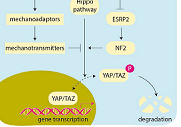 An engineered mayhem: YAP/TAZ mechanosignaling and hepatocarcinogenesis in NAFLDOpen AccessCommentaryGyorgy BaffyPublished: August 31, 2021 Explor Med. 2021;2:305–310
An engineered mayhem: YAP/TAZ mechanosignaling and hepatocarcinogenesis in NAFLDOpen AccessCommentaryGyorgy BaffyPublished: August 31, 2021 Explor Med. 2021;2:305–310